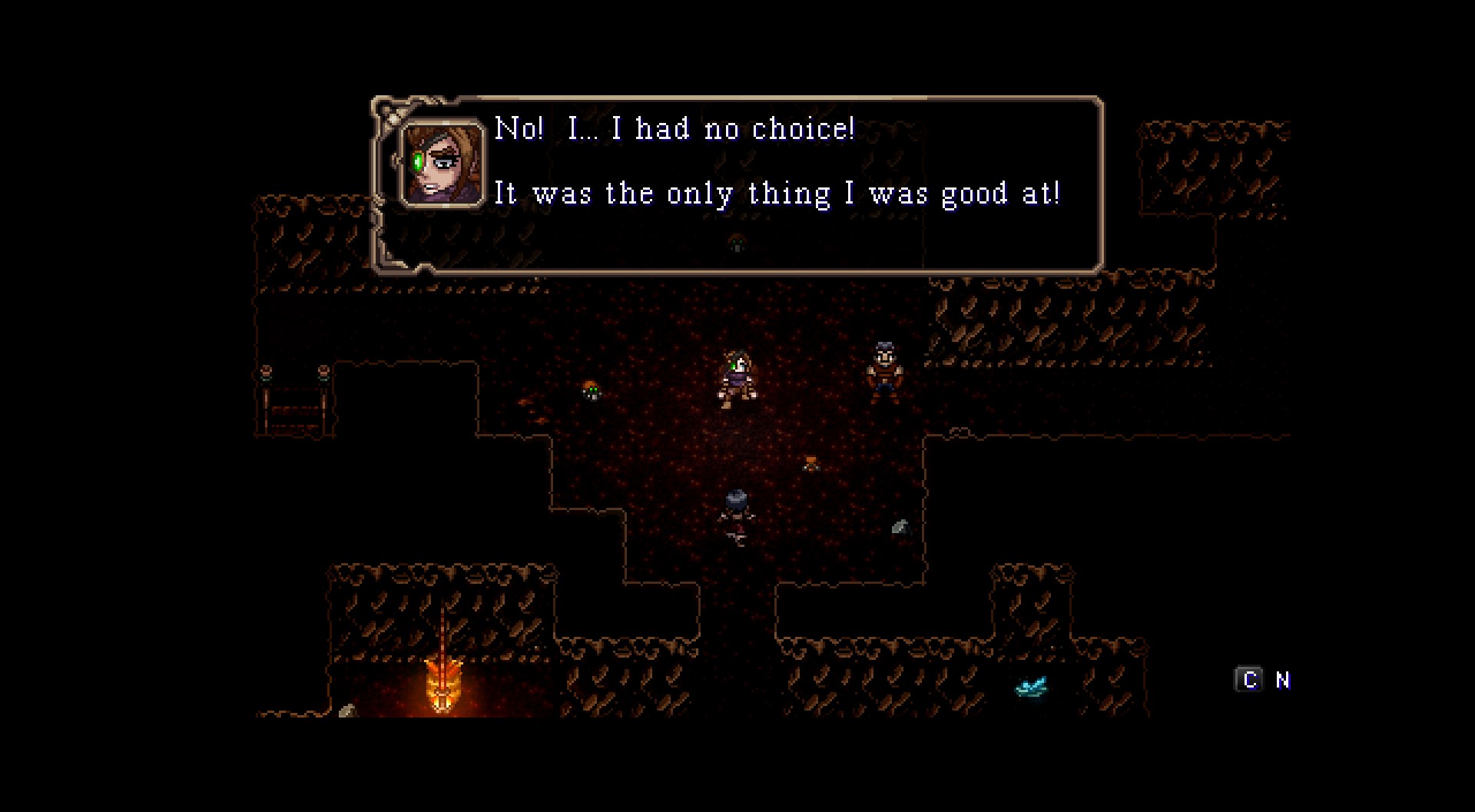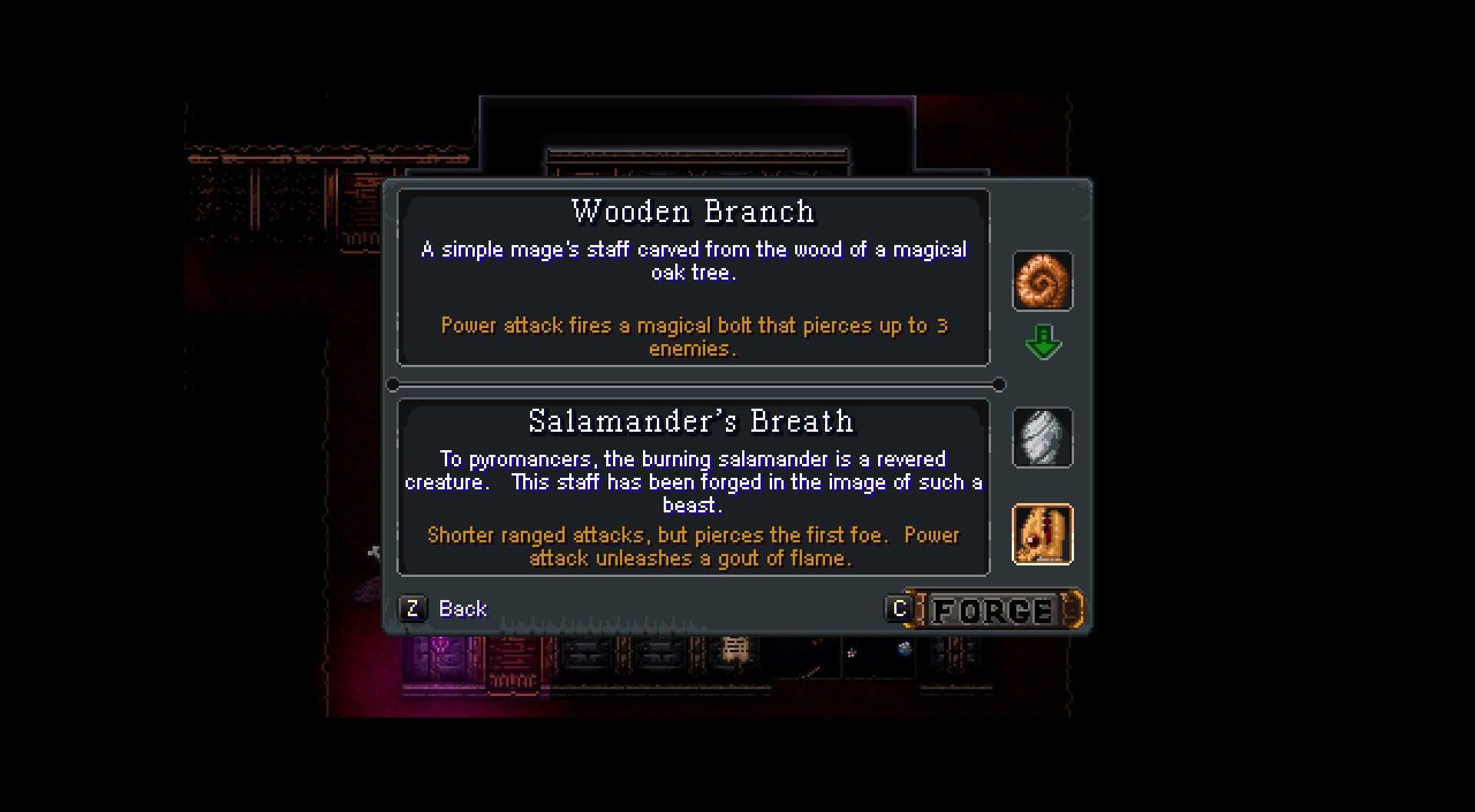Wayward Souls is a 16-bit roguelike with a story to tell
Unique stories and cutscenes for seven playable characters set Wayward Souls apart from similar dungeon crawlers.
The fighter is too slow and clunky. The mage brittle and lacking. But the rogue feels just right. Rocketcat Games’ pixelated roguelike dungeon crawler Wayward Souls didn’t click with me until I stepped into the shoes of Renee the Rogue.
Renee has only a single ability aside from her basic dagger attack: the all-important dash. With a reliable way to avoid attacks I finally reached some level of success as I plunged deeper into the randomly generated dungeons... until I was devoured by a horde of angry boars.
Wayward Souls, out now via Steam Early Access, is styled as a close relative to classic SNES 16-bit RPGs like Chrono Trigger and Secret of Mana. The pixel art looks fantastic, with a rich variety of randomly generated dungeon tilesets and plenty of monster variety. Developer Rocketcat Games' has experience with pixel art and procedural generation, combining both in the wonderfully absurd roguelike Death Road to Canada. Despite the random generation, the RPG inspiration here means there's more focus on a cast of named characters and their adventure through the dungeons.

I can select my class at the beginning, but only after first completing a prologue with the Paladin. During this sequence Wayward Souls already makes good on its story-heavy focus with numerous dramatic cutscenes as I play through an invasion of a castle. Alas my newbie paladin falls to the boss, and I’m greeted with his tombstone. Death is permanent. Like Rogue Legacy, gold carries over, and can be spent to upgrade each character. Skill upgrades are more Path of Exile than Diablo, raising my HP, crit chance, and mana reduction by a small percentage with each purchase.
The story is legitimately captivating, particularly the ghostly scenes that reveal the tragic history of the land.
It’s not terribly thrilling for an entire run to come down to increasing my crit chance by 3% for the next one. The lack of detailed information is also irritating. There’s no telling how much “+2 Bonus Life” actually means, as my HP is always represented by a bar, never a number.
I quickly realize that one of the best skills for any character is a small heal at the end of each floor, since healing is otherwise almost nonexistent. Wayward Souls wants me focused squarely on speed and offense, yet movement and combat is a bit slower than I like. Eventually my skill upgrades and enemy knowledge add up, allowing me to reach the end of the first dungeon with my beloved rogue, where I learn a little more about the fall of the kingdom.

The tragic tale of a cursed tower
Each character class has its own storyline. I’m not used to watching cutscenes and reading lore in my dungeon crawlers, and I found it a welcome change of pace. The story is legitimately captivating, particularly the ghostly scenes that reveal the tragic history of the land. The game rarely wrests control away from me, so I’m free to either move on to the killing or stay awhile and listen. So far, I always choose to stay.
Keep up to date with the most important stories and the best deals, as picked by the PC Gamer team.
Unfortunately, the roguelike structure of Souls meant I saw the same scenes often repeat. I watched Renee get taunted by a rival master thief half a dozen times. Naturally, each floor of the dungeon is randomly generated, along with the random story scenes, but the character-specific cutscenes seemed to play out every time on certain floors.
Most rooms slam shut when I walk inside, forcing me to kill everything within to proceed. Enemies follow patterns that reward knowledge, timing, and efficient use of limited resources. The rogue lacks the consumable abilities of the fighter or mage, but can find and carry several different one-use potions. Potions can dramatically alter a battle in my favor, including stunning and blinding rooms full of enemies. The UI is in desperate need of a quickbar or radial menu, however. I was never a fan of pausing the action to bring up my inventory to swig a potion.

Regardless of my skills, my dungeoneering successes were mostly tied to how many Emberforges I could find. These rooms let me upgrade my basic abilities with powerful branching skills. Abbie the mage could upgrade her ranged staff attack into either a longer range snipe, or a shorter flame-thrower. These essential upgrades are lost on death, and starting over after enjoying an upgraded with rogue with stealth-inducing blades and poison-retaliation boots was always painful.
Beating all five floors of the first dungeon unlocks the fourth of seven character classes. Cyril the Adventurer is an interesting amalgamation of fighter, mage, and thief, and I’m digging his tale as a young man haunted by literal shadows. I’ve enjoyed experimenting with him as I attempt the second dungeon, Amaranth Keep. It features more floors and tougher and more numerous enemies, including pesky gargoyles who spout flame and turn to stone, only to explode in my dying face.
Despite its relatively simplistic controls, Wayward Souls is pleasantly engaging, challenging, and rewarding, especially for a game that started life on iOS and Android four years ago. It lacks the faster pace, vibrant art, and fine-tuned controls of genre behemoths like Rogue’s Legacy or Spelunky, but the story bits help set it apart in a very crowded genre. The variety of classes help ensure there's at least one playstyle you can work with, and it nails the 16-bit SNES aesthetic. Just mind that room full of boars.

